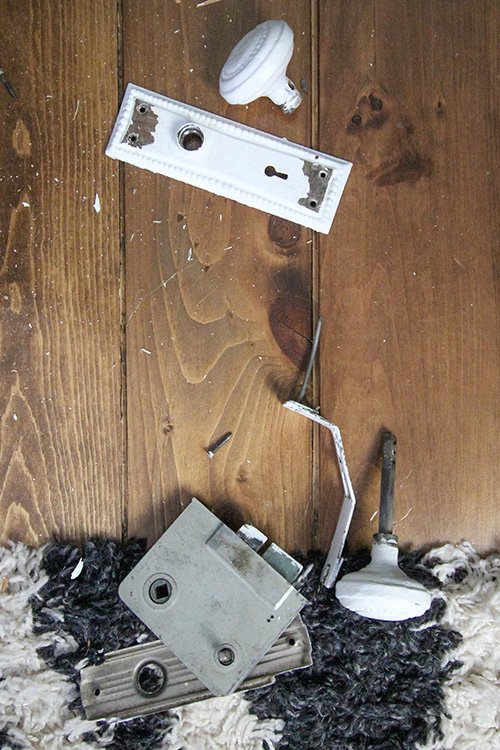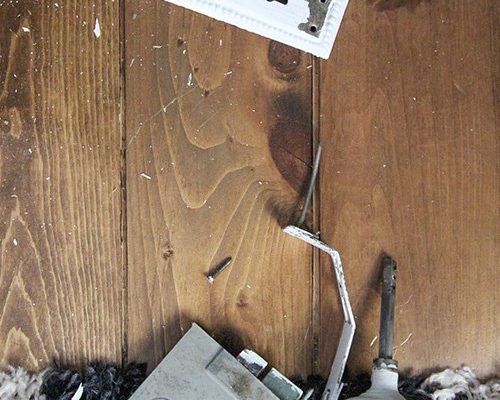
Repairing interior door hardware when the door is damaged isn’t just about fixing a squeak or a loose knob. It’s a bit like a jigsaw puzzle. You need to understand how each piece—like hinges, locks, and handles—fits together and how they interact with the door. Let’s grab a cup of coffee and explore how to tackle this issue step-by-step, making sure your door works smoothly again.
Assessing the Damage to Your Door
Before jumping into repairs, take a moment to truly assess what’s happening with your door. Look closely at the hardware and the door itself. Is the door warped, cracked, or is the frame damaged? You might notice that a poorly aligned door can cause the hardware to strain and wear out faster. If the door is obviously damaged, it may need more than just a hardware fix.
For instance, if the door has a significant crack, replacing the door might be the best option. On the other hand, if only the hardware is affected, you can focus on fixing things up. Check the hinges for rust—this can be a sign they’ve outlived their usefulness. And don’t forget to look at the area around the doorframe; if there’s damage there, it can affect how the door functions. When you know what you’re dealing with, you can better determine your next steps.
Common Types of Damage to Interior Doors
Interior doors can suffer various types of damage. These could be superficial, like scratches and dents from furniture, or structural, such as warping due to humidity. Knowing what to look for can save you unnecessary stress later.
- Scratches and Dents: These are usually easy fixes. A bit of wood filler and paint can often do the trick.
- Warping: If your door doesn’t close properly, it may be warped. Sometimes, applying heat can help reshape it.
- Cracks: Deep cracks might require some specialized repair, like using epoxy or replacing the door entirely.
- Rusty Hinges: If hinges are rusty or squeaky, they can be cleaned or replaced easily.
Understanding the type of damage can guide you on whether to keep fixing or consider replacing the door. It’s okay to weigh your options here.
How to Fix Loose Hardware
One of the most common issues with door hardware is loosening over time. If your doorknob or latch is loose, it’s essential to tighten or replace the screws. Here’s how you can go about it.
1. Gather Tools: You’ll need a screwdriver, a drill, and possibly wood glue or epoxy for deeper repairs.
2. Tighten Screws: Start by tightening the screws on the doorknob and any visible hardware. If you’re having trouble, new screws might help.
3. Check Alignment: Open and close the door a few times to test the stability of the hardware after tightening. If it’s still loose, you might need a new set of screws or a different doorknob altogether.
Here’s the thing: *loose hardware can lead to bigger problems* down the line, including broken locks or cracked doors, so don’t put this off.
Repairing or Replacing Hinges
Hinges are the unsung heroes of your door hardware. If they’re not functioning well, your door can jam or swing awkwardly. You can often repair them with a bit of effort, but sometimes replacement is the way to go.
– Repairing Hinges: Check if the hinge pin is stuck. If so, try removing the pin and cleaning it before replacing it. You can also lubricate it to make sure it moves smoothly.
– Replacing Hinges: If the hinges are rusty or broken, it might be best to replace them. Look for similar-sized hinges so the new ones fit into the existing holes.
– Installing New Hinges: Mark the drill holes with a pencil, remove the old hinges, and install the new ones by aligning them carefully; this helps maintain the feel of the door’s function.
If you’re unsure about whether to repair or replace the hinges, remember that a smooth opening and closing action can save you future headaches.
Dealing with Door Locks
Locks can be a bit more complex. If your door lock is malfunctioning, it can prevent the door from opening or locking correctly, which can compromise your security. Here’s how to troubleshoot it.
1. Inspect the Lock: Look for debris or misalignment of the lock mechanism. Sometimes, a simple cleaning can do wonders.
2. Lubricate the Lock: Use a graphite-based lubricant to keep the lock working smoothly. Avoid oil-based lubricants, as these can attract dirt.
3. Replace the Lock: If it still doesn’t work, consider replacing the lock. It’s usually quite simple—just unscrew the old one and screw in the new lock following the same alignment.
Again, the goal here is to have a lock that functions securely without hassle.
Testing Your Repairs
Once you’ve made the necessary repairs to both the door and the hardware, take some time to test everything out. Open and close the door several times to ensure that it’s moving smoothly. Listen for any strange noises, like squeaking or grinding—these could indicate that you missed something.
Don’t forget to check that the lock engages and disengages smoothly. If it doesn’t, revisit the lock and adjust as necessary. Remember, the aim is to restore functionality and security to your interior door, making it a reliable part of your home again.
When to Seek Professional Help
Sometimes, a DIY approach isn’t enough, especially if the damage is more severe or if you’re uncomfortable with power tools. If you’re facing significant structural damage, or if your lock and hardware are outdated and malfunctioning, it might be best to call in a professional. Not only can they provide you with expert advice, but they can also save time and tackle tricky repairs effectively.
A professional can also ensure that new hardware is installed correctly and that any structural issues are resolved. Remember, sometimes it pays to let an expert handle things—particularly when safety is a concern.
In conclusion, repairing interior door hardware when the door itself is damaged can feel daunting, but with a methodical approach, you can tackle it. Assess the damage, fix or replace hardware as needed, and always ensure everything is working smoothly after repairs. If all else fails, don’t hesitate to call a pro to restore your peace of mind. That door can be a welcoming gateway to your home again!
